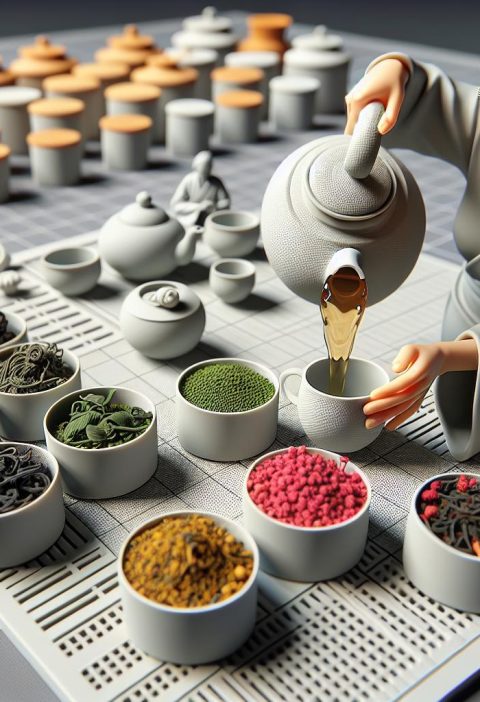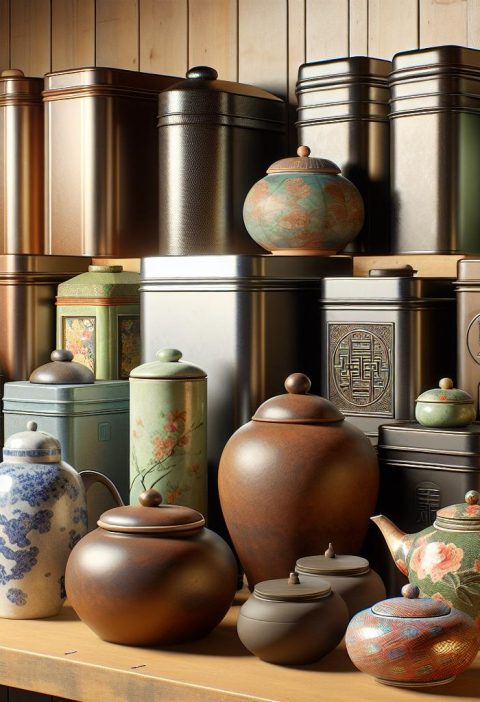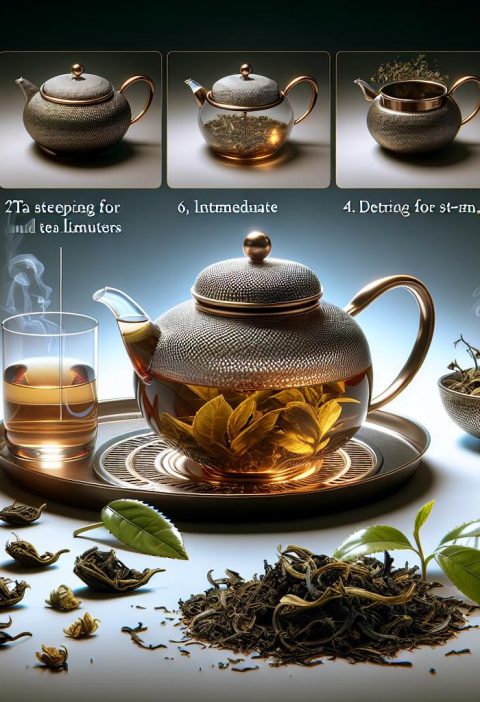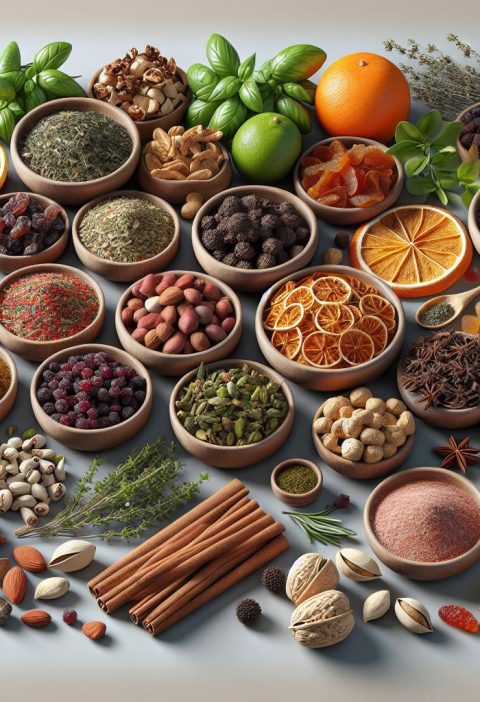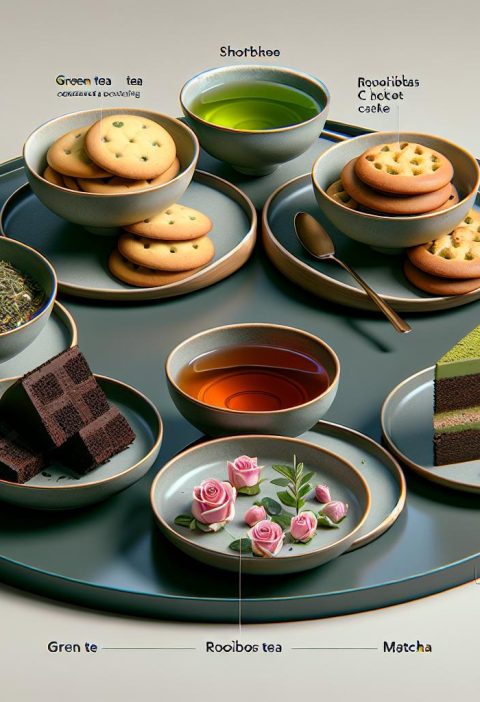Welcome to the world of sustainable tea brewing practices! As tea enthusiasts, we understand the importance of not only savoring the perfect cup but also ensuring that our passion for tea aligns with eco-friendly principles. In this article, we’ll explore how we can elevate our tea brewing experience while minimizing our environmental impact.
From selecting ethically sourced tea leaves to choosing the right brewing methods, our journey towards sustainability begins with conscious choices. By delving into the realm of sustainable tea brewing practices, we can discover innovative ways to enjoy our favorite brews while contributing to a healthier planet. Let’s embark on this exciting exploration together and learn how small changes in our tea rituals can make a significant difference in promoting sustainability.
Selecting Ethically Sourced Tea Leaves
When it comes to sustainable tea brewing practices, choosing ethically sourced tea leaves is a crucial step towards minimizing our environmental footprint and supporting ethical farming practices. Whether you’re a beginner tea enthusiast or an experienced connoisseur, here are some actionable tips to help you make mindful choices when selecting tea leaves:
For Beginners: Getting Started on the Right Foot
- Look for organic certification on tea packaging.
- Opt for Fair Trade certified teas to support ethical working conditions.
- Explore direct trade teas from small-scale tea producers.
For Intermediate Tea Lovers: Enhancing Your Tea Experience
- Research the sourcing practices of tea brands you’re interested in.
- Consider teas that are Rainforest Alliance certified for environmental sustainability.
- Prioritize teas that are grown using traditional farming methods for authenticity.
- Seek out teas from single-origin estates for a unique flavor profile.
- Support climate-friendly tea production initiatives.
- Explore teas from certified B Corporations for a holistic approach to ethical sourcing.
By conscientiously selecting ethically sourced tea leaves, we can not only enjoy high-quality teas but also contribute to the well-being of tea farmers and the environment. Make informed choices that align with your values and together, we can brew a more sustainable future.
Choosing the Right Tea Brewing Methods

When it comes to sustainable tea brewing practices, selecting the right brewing methods is key to enhancing your tea experience while being mindful of the environment and ethical sourcing practices. Whether you’re a beginner looking to start your tea journey or an expert seeking advanced techniques, here are our recommendations for choosing the right tea brewing methods:
For Beginners: Mastering the Basics
- Start with the Basics: Begin with simple brewing methods like steeping tea in a teapot or using tea bags.
- Temperature and Time: Pay attention to the water temperature and steeping time to avoid bitterness and bring out the best flavors.
- Explore Infusers: Invest in a tea infuser to make it easier to brew loose-leaf teas.
- Experiment with Different Teas: Try a variety of teas such as green, black, and herbal teas to discover your preferences.
For Intermediate Tea Enthusiasts: Enhancing Your Dish
- Upgrade Your Equipment: Consider investing in a quality teapot, electric kettle with temperature control, or a teapot with an infuser for more control over your brew.
- Fine-Tune Brewing Variables: Adjust factors like water quality, tea-to-water ratio, and brewing time to customize your tea experience.
- Try Different Brewing Methods: Explore techniques like Gongfu Cha, cold brewing, or matcha preparation for a unique taste.
- Support Sustainable Brands: Opt for teas from ethical and transparent brands that prioritize fair trade and environmentally friendly practices.
- Perfect Your Pour Over: Enhance your skills with advanced pour-over techniques to extract nuanced flavors.
- Blend Your Own Teas: Experiment with creating your own tea blends using different tea varieties, herbs, and spices.
- Embrace Tea Pairing: Dive into the world of tea pairing with food to elevate both your culinary and tea experiences.
- Explore Tea Ceremonies: Delve into traditional tea ceremonies like Japanese Chanoyu or Chinese Gongfu Cha for a holistic tea appreciation.
Remember, the joy of sustainable tea brewing lies not just in the final cup but in the process of selecting the right brewing methods that align with your taste preferences and values. Happy brewing!
Importance of Sustainable Tea Accessories
When it comes to sustainable tea brewing practices, having eco-friendly tea accessories is crucial. Not only do they enhance our brewing experience, but they also contribute to a healthier environment. Here’s why sustainable tea accessories play a vital role at every level of expertise:
For Beginners: Getting Started Right
- Opt for reusable tea infusers to reduce waste from tea bags.
- Choose glass or stainless steel teapots that are durable and easy to clean.
- Look for bamboo tea utensils like tongs and spoons for a natural touch.
For Intermediate Enthusiasts: Elevating Your Brew
- Invest in a quality electric kettle with temperature control for precise brewing.
- Consider ceramic or clay teapots to enhance the flavor profile of different teas.
- Explore recycled glass teacups for a sustainable and stylish tea-drinking experience.
- Dive into the world of handcrafted ceramic tea sets for a touch of artistry.
- Try Japanese cast iron teapots for an authentic and timeless brewing method.
- Explore natural fiber tea towels for a traditional and eco-friendly tea ceremony aesthetic.
Choosing sustainable tea accessories isn’t just about functionality; it’s a mindful decision that aligns with our values for a greener future. From basic infusers to exquisite tea sets, our selection of accessories can truly make a difference in how we enjoy our favorite brews.
Reducing Water Waste in Tea Brewing
When it comes to sustainable tea brewing, minimizing water waste is crucial. Whether you’re a beginner or an expert in the realm of tea brewing, there are practical steps we can all take to reduce our environmental impact. Let’s delve into ways to achieve this:
For Beginners: Smart Start
- Measuring Water: Be mindful to boil only the amount of water you need for your tea.
- Reusing Water: After steeping your tea, consider reusing the leftover water for houseplants.
- Cold Steeping: Try cold steeping your tea to enjoy a refreshing beverage without the need for hot water.
For Intermediate Tea Enthusiasts: Going the Extra Mile
- Water Filtration: Invest in a filtration system to purify water and reduce the use of bottled water.
- Tea Concentrates: Experiment with tea concentrates to dilute with water, minimizing waste.
- Hydration Monitoring: Track your daily water usage to become more aware of your habits.
- Hydro-Dynamical Methods: Explore hydro-dynamical brewing techniques to optimize water usage.
- Rainwater Harvesting: Consider harvesting rainwater for your tea brewing needs.
- Recycling Systems: Implement recycling systems for water used in tea brewing processes.
Exploring Composting Options for Tea Waste

Tea brewing often results in leftover tea leaves and tea bags that can be repurposed through composting. This eco-friendly practice not only reduces waste but also enriches the soil for future plant growth. Let’s delve into different composting options for tea waste based on your experience level.
For Beginners: Getting Started with Tea Waste Composting
- Simple Composting Bin: Start with a basic composting bin or pile in your backyard.
- Layering Technique: Alternate layers of tea waste with brown materials like leaves or shredded paper.
- Regular Turning: Mix the compost pile regularly to aerate and speed up decomposition.
- Patience is Key: It may take a few months for the tea waste to break down completely.
For Intermediate Enthusiasts: Elevating Your Composting Game
- Vermicomposting: Consider a worm composting bin for faster decomposition.
- Balanced Ingredients: Maintain a balance of green (tea waste) and brown materials for optimal composting.
- Monitoring Moisture Levels: Ensure the compost pile is moist but not soggy.
- Use Compost as Fertilizer: Once ready, use the compost to nourish your garden plants.
- Hot Composting: Opt for hot composting by actively managing carbon and nitrogen ratios.
- Aerate Regularly: Invest in a compost aerator to provide oxygen to the microorganisms.
- Compost Tea: Create nutrient-rich compost tea by steeping compost in water for plant fertilization.
- Experiment with Different Methods: Try different composting methods like Bokashi or trench composting for diverse benefits.
Composting tea waste is a rewarding practice that aligns with sustainable tea brewing principles. Whether you’re a novice or a seasoned composter, there are options available to suit your expertise level and contribute to a greener environment.
Conclusion
Sustainable tea brewing goes beyond just making a cup of tea. By composting tea waste, we can actively contribute to a greener environment while enriching our gardens with nutrient-rich compost. Whether you’re a beginner starting with a simple composting bin or an intermediate enthusiast exploring vermicomposting, there are various ways to repurpose tea waste sustainably. Advanced techniques like hot composting and creating compost tea offer further options for those looking to elevate their sustainability practices. Embracing composting as part of our tea brewing routine not only benefits our plants but also aligns with our commitment to a more eco-friendly lifestyle. Let’s continue to brew our tea sustainably and make a positive impact on the environment.

